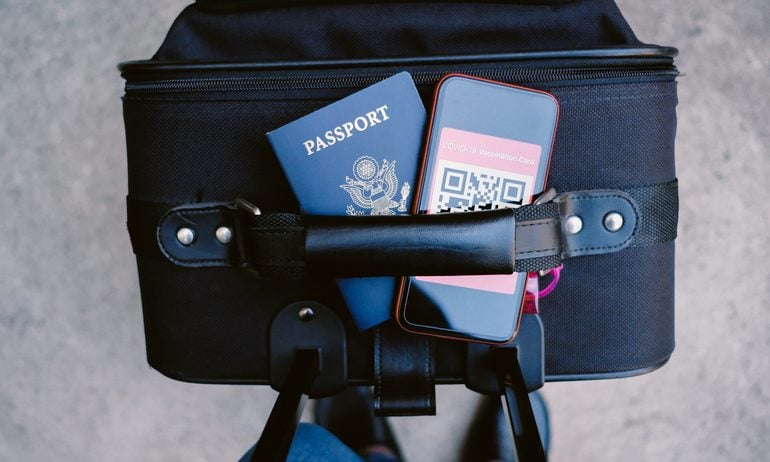EU Launches Digital Border System
Non-EU nationals, including Americans, will have to register with the EES upon arrival to participating countries.

Many or all of the products on this page are from partners who compensate us when you click to or take an action on their website, but this does not influence our evaluations or ratings. Our opinions are our own.
The days of adding to your passport stamp collection is gone — at least for travelers to many European countries. The EU’s passport control process has gone digital. Under the new Entry/Exit System (EES), travelers to the EU will have their fingerprints and face scanned as part of registration.
One of the goals of the new system is to eventually cut down on wait times at border crossings. The EES, which applies to non-EU travelers making short visits to Europe (trips under 90 days), is also designed to prevent visitors from overstaying, using fake IDs or otherwise misusing visa-free travel.
The switch to the new system began Oct. 12, 2025, with full implementation by April 10, 2026. Here’s what to expect.
How the new EES impacts European travel
Non-EU nationals, including Americans, will have to register with the EES upon arrival to participating countries. When you enter most European countries after Oct. 12, 2025, you’ll be directed to authorize the EES to collect the following data:
Full name and date of birth.
Date and place of every entrance and exit.
Facial image and scan of four fingerprints.
If you were refused entry to any country.
This information will be stored for an average of three years and linked to your biometric data. If you refuse to have your fingerprints scanned or photo taken, you won’t be able to enter the EU. Note that children under 12 don’t have to provide fingerprint scans.
The rollout will happen in phases over six months. The EES should function throughout all participating countries by April 10, 2026.
While each country’s exact EES rollout date remains unknown, certain airports in Spain, Croatia, Luxembourg and Estonia are expected to use it right away. You can likely expect popular destinations like Paris to be early adopters of EES.
Non-Schengen countries like Ireland and Cyprus will continue to use the current system of physical passport checks.
» Learn more: How to choose a credit card for Europe travel
What to expect during the EES rollout
You may be directed to provide your biometric data at any border throughout the 29 participating countries. Because of the phased implementation, continue to keep pages available in your physical passport for now. Depending on where you’re crossing a border, your passport may still be stamped.
Give yourself extra time, particularly if you’re traveling to a popular destination, as queues and wait times may be longer while travelers register their data. Eventually, wait times may decrease as more airports and border crossings adopt the new system.
Note that the EES doesn’t change existing visa requirements. If you currently need a visa to enter a country, you’ll still need one. Be sure to check the requirements well in advance of your trip. U.S. passport holders can enter most European countries visa-free for up to 90 days.
» Learn more: The guide to travel insurance for trips to Europe
Paving the way for ETIAS
There’s one more acronym to keep in mind: ETIAS, or European Travel Information and Authorization System. Expected to begin in late 2026, ETIAS will become an entry requirement to all of the same European countries as the EES, plus Cyprus.
ETIAS is a digital pre-travel authorization you’ll need to complete before you travel to participating countries. While the ETIAS website says most applications are approved in minutes, some may require additional information and take up to 30 days to process. Because of that, you should complete your application when you buy flights and book hotels.
The digital authorization includes a 20-euro application fee (around $23).
Between the two programs, there will likely be some bumps ahead for travelers to Europe. According to ETIAS and ESS sources, all of this is in the service of potentially streamlining travel long-term. If you have an upcoming trip to Europe, take note of these changes and allow yourself extra travel time, particularly upon arrival.
How to maximize your rewards
You want a travel credit card that prioritizes what’s important to you. Here are some of the best travel credit cards of 2025:
Flexibility, point transfers and a large bonus: Chase Sapphire Preferred® Card
No annual fee: Wells Fargo Autograph® Card
Flat-rate travel rewards: Capital One Venture Rewards Credit Card
Bonus travel rewards and high-end perks: Chase Sapphire Reserve®
Luxury perks: American Express Platinum Card®
Business travelers: Ink Business Preferred® Credit Card




